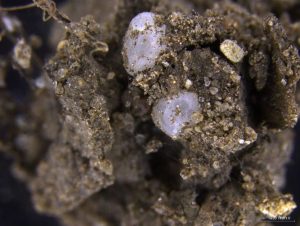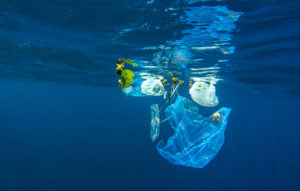McGill prof working on way to make bio-plastic from shells of pesky crabs
Science may find uses for crustacean waste.
HALIFAX, N.S. — Will that be paper, or bio-plastics created from the shells of European green crabs?
A shopper doesn’t have that choice quite yet, but a proposed research project wants to explore turning an invasive species into a solution to the global plastics problem.
Audrey Moores, an associate professor of chemistry at McGill University, spent a day at Kejimkujik National Park Seaside last summer participating in its Gone Crabbin’ program, something available to all visitors.
The European green crab is an aggressive species that has damaged ecosystems around the world in areas where it is not native, including Atlantic Canada. At Kejimkujik park, the crabs destroy eelgrass, which provides a nursery habitat for marine species, stabilizes marine sediments and is a primary food for geese.
In her lab, Moores had been exploring ways to use a technique called mechanochemistry to create reactions in materials like shells in their solid phase rather than use environmentally unfriendly techniques with corrosive liquids.
“I was not aware of the green crab situation at all until we published an article on making some new bio-plastics from crustacean shells and we got a phone call from people at Parks Canada,” said Moores during a phone interview Sunday from Montreal.
“We designed a method where we rely solely on solid-state chemistry, which allows us to limit drastically the quantity of water that we use and also limit the quantity of chemicals that we use.”
She said even crustaceans processed for food leave shells to be discarded.
“What we’re trying to think about is can we take this as a resource to make some material that a fishery can actually sell and value.”
Moores said a group of academics are working on the transformation of crustacean shells into bio-plastics, but she believes her team’s discovery “is really cool.”
“Combining that element of research in chemistry with an ecological outreach to try to help solve the problem of invasive species, to my knowledge no-one’s done that.”
Raising funds for the next phase of work is taking a unique path. The Marine Environmental Observation Prediction and Response Network’s Fathom Fund seeks community contributions to support initiatives.
The goal is to raise $12,500 through crowdfunding over the next two months. If that goal is achieved, the Fathom Fund provides an additional $37,500.
Parks Canada is supporting the project with $20,000, as well as through in-kind advice and expertise, and is collaborating with Moores.
The project team, aside from Moores, will include Chris McCarthy, resource conservation manager for the Mainland Nova Scotia Field Unit of Parks Canada; Gabrielle Beaulieu, coastal restoration project manager at Kejimkujik National Park Seaside; and a yet-to-be-hired full-time researcher from either Quebec or Nova Scotia who is a recent graduate with a master’s or PhD in chemical engineering, chemistry, food or environmental sciences.
Parks Canada will directly contribute raw material to the initiative through local community harvesting agreements and co-ordinating with green crab licence holders throughout southwest Nova Scotia.
If the crowdfunding goal is met, Moores said, most of the near-term research will take place at Kejimkujik.


